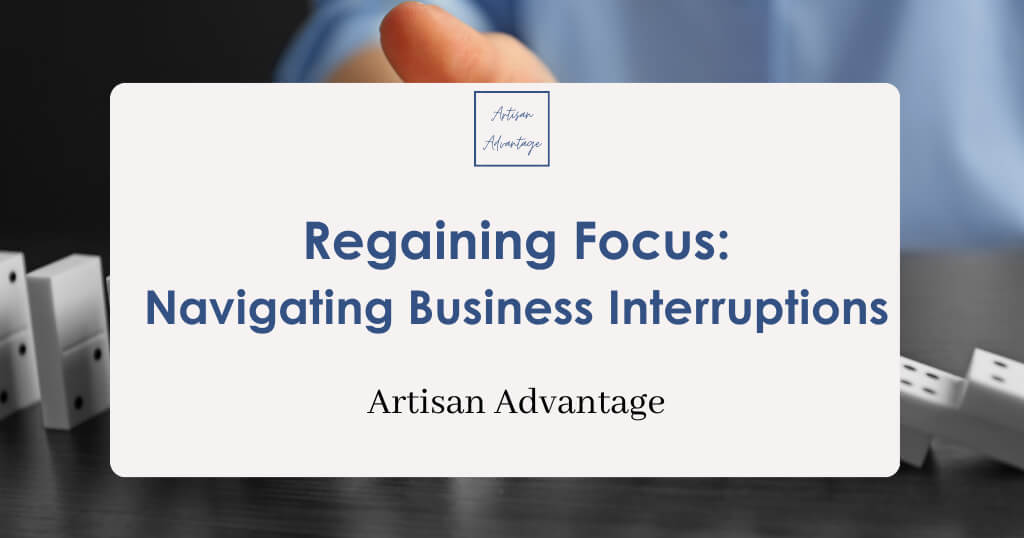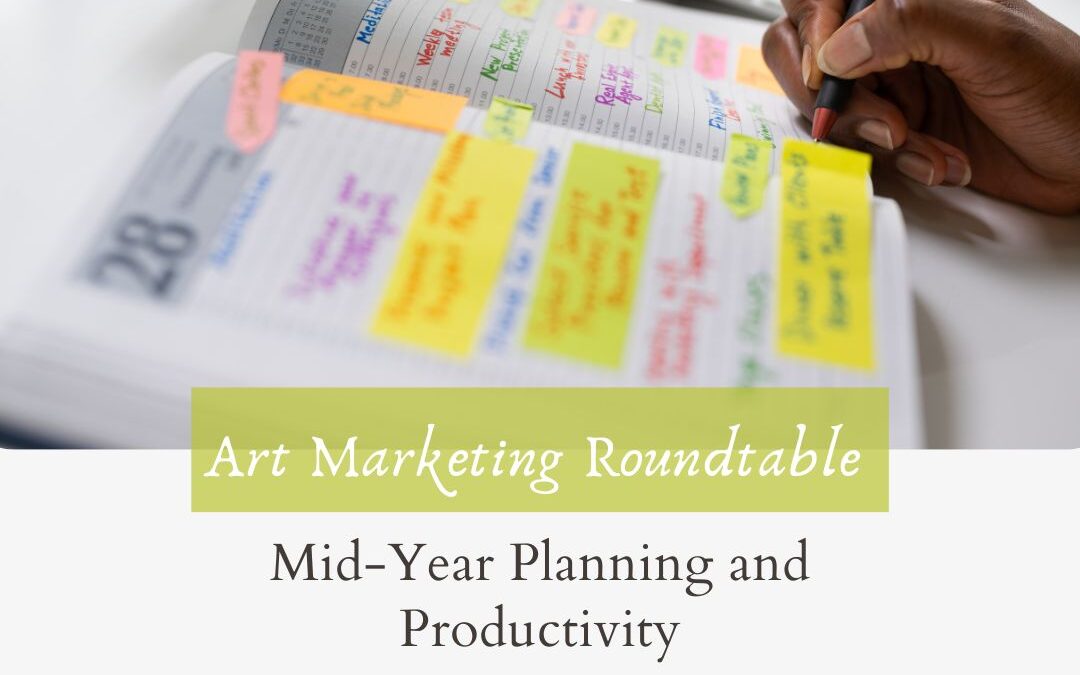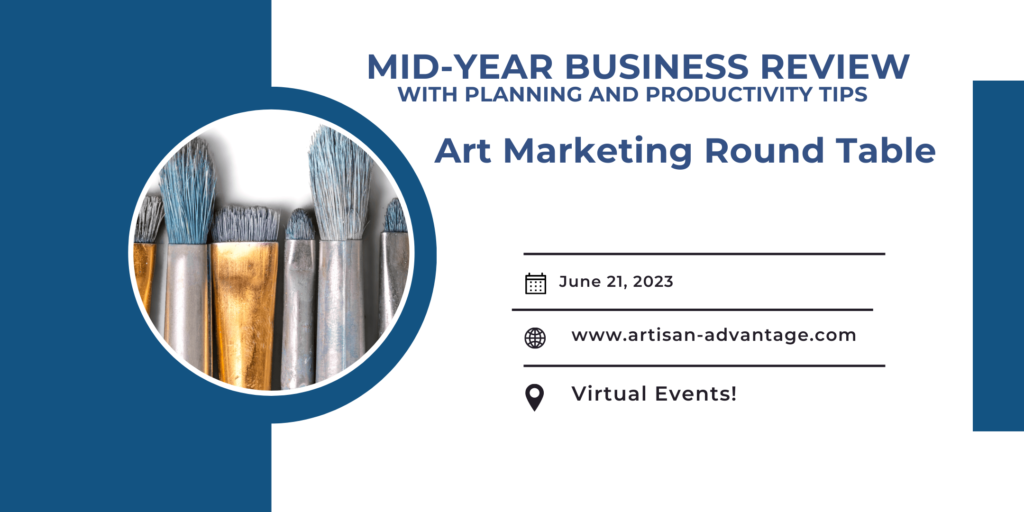
by Rebecca Sciullo | Mar 12, 2024 | Planning, Productivity, Resources, Time Management

Mastering Time Management and Planning: Your Path to Productivity
This week’s video focuses on some ideas for planning and time management. Recognizing that implementing new marketing strategies sometimes means there is more to do, I share a few ideas around planning and time management that have helped me a lot.

Video Recap
1 – The Rule of 3
I use the number 3 to guide my focus on yearly goals and daily tasks. Choosing three things to strive for or accomplish out of a seemingly never-ending to-do list helps prioritize what needs to be done without getting overwhelmed.
2 – Revisit Your Plans More Than Once a Year
Planning isn’t a once-a-year affair. Establish yearly goals but review them quarterly to adapt to evolving priorities. Break it down further by creating monthly, weekly, and daily plans. This approach encourages flexibility and accomplishment while staying focused on long-term objectives.
3 – Time Blocking
Maximize productivity by scheduling specific tasks and activities on your calendar. Designate dedicated time slots for work projects, studio time, or self-care to stay organized and accountable.
Trust the Process
Remember, progress is about consistent small steps over time. Celebrate each milestone, no matter how small, and trust in the journey toward your goals.
Resources Mentioned in the Video
Create a 12-Month Action Plan: Use the code PLANNING for a 70% discount.
Michael Hyatt’s Full Focus Planner
Join my Weekly Email Newsletter

This post contains affiliate links which means I receive a small commission if you make a purchase using the link. For more information, see my full terms here.

by Rebecca Sciullo | Feb 2, 2024 | Productivity
Business Interruptions are a Normal Part of Your Art Business
Running a solo business, like many art ventures, can come with unexpected interruptions that disrupt your daily plans. Whether it’s a technical problem stopping your progress or a personal project needing attention, these interruptions can throw off your workflow and make it harder to get things done. However, having a plan to deal with interruptions can help you handle these challenges and get back on track, which is crucial for keeping up your momentum and making the most of your time.
Life Happens
This week, I faced two situations that interrupted my business – first, a technical glitch, and then a positive development around a vacation that needed urgent planning. It got me thinking about this topic, and I wanted to share some ideas for handling business interruptions and getting back to being productive.

The Impact of Interruptions
When running a solo business, you must manage many tasks at once. Interruptions, like technical issues or personal projects, can be especially frustrating, as it can feel some days like it’s impossible to get anything accomplished. You might feel overwhelmed and unsure about what to do next, especially if you don’t have an assistant to help with some of your business tasks.
Strategies for Regaining Focus
Here are some strategies to regain focus when life or technical issues slow you down.
1 – Assess the Situation
When something interrupts your business, take a step back and determine how serious it is. Decide what needs to be dealt with first by considering what’s most urgent or essential. Doing this will help you focus your efforts and get back on track faster. Are you getting distracted by things that require your attention at that moment, or are you being pulled simply because the issue has presented itself?
For example, my technical situation was time-sensitive as the issue was causing my website to be offline. So, it was an important issue to fix, and I had to take time to solve it immediately. However, I often get personal calls from my family and friends that are less urgent, and I’ve learned strategies for blocking my time to avoid those types of things over the years so they don’t take me off track.
2 – Seek Help
It’s okay to ask for help when you need it. Whether getting advice from other business owners online or hiring someone to help with specific tasks, don’t hesitate to ask for support. YouTube can be an excellent place to find quick help for technical how-to videos. There are also communities like the Artisan Advantage Facebook Community where you can ask questions and get help from fellow artists. Find out resources that you need regularly and keep them handy.
3 – Set Realistic Goals
Be honest about what you can get done in a certain amount of time, especially when balancing personal projects and business tasks. Break big tasks into smaller ones to make them easier to tackle. Setting achievable goals will help you stay on track even when things get hectic.
4 – Stay Flexible
Managing the situation when unexpected things happen is essential for solo business owners. Be ready to adjust your priorities if something comes up. Staying flexible will help you deal with obstacles and keep your business running smoothly. My personal project involved travel and required quick decision-making and a few lengthy phone calls. Since I knew I had to table my business plans that morning to shift into travel planning mode, I looked at my schedule and decided when to make up that time. That helped me move forward with some peace of mind, knowing I would eventually return to my business activity.
5 – Take Care of Yourself
Remember to take care of yourself, especially during stressful times. Take breaks when needed, do things that help you relax, and don’t be afraid to ask for help if you feel overwhelmed. Taking care of yourself will help you stay productive and focused.
It Helps to Have a System
Even though running a solo business can be challenging, having a plan for dealing with interruptions can help you stay on track. By setting up a routine for how you work and when you do specific tasks, like marketing your business, you can get back to business quickly when something comes up.
Navigating interruptions as a solo business owner can be challenging, but with the right strategies, you can stay focused and keep your business moving forward. Remember to assess the situation, ask for help when needed, set realistic goals, stay flexible, and take care of yourself. With these tools, you can overcome any obstacles that come your way and keep your business running smoothly.
Would you like to join the Artisan Advantage Facebook Community? While artists can post questions at any time, we also have a live weekly Q&A where I take questions related to your art business.
Join the Facebook Group here.
Do you need a plan of action? Get your 12-Month Action Planning Guide here.

by Rebecca Sciullo | Jun 20, 2023 | Events, Learning, Planning, Productivity, Your Hub
Do you have a business plan for your art business? It might not be that unusual that you don’t. If you started selling your art as a side business and fell into it, as sometimes happens, you may not have one. Or, maybe you’ve been so busy working between producing work and marketing that you haven’t reviewed your plans in a while. The good news is that there is always time.

Reasons to consider writing or revamping your art business plan.
You need a strategic approach combining your artistic vision with a well-designed business plan to succeed. Here are some things a solid business plan will do for you.
A good plan ensures you to treat your art as a business. Many artists need help viewing their creative pursuits as a business, fearing that it might dilute their artistic integrity. Treating art as a business helps you to establish a professional framework, enabling you to focus on goals, identify target audiences, and allocate resources effectively.
Setting clear goals gives you a roadmap to success. By outlining your vision, then short-term and long-term plans, you can stay focused, measure progress, and adapt your strategies accordingly.
A business plan helps you to manage your finances. Your financial stability is vital for sustaining a creative endeavor. With a clear understanding of their finances, artists can invest wisely in their art and secure a stable income.
Your plan outlines effective marketing strategies. An effective business plan helps you identify a target market and develop effective marketing strategies, allowing you to tailor artistic offerings, craft persuasive messages, and utilize appropriate marketing channels, maximizing your reach and exposure.
It gives you accountability. There is something about putting your plans into writing that takes you one step further to sticking to them. Share them with a partner or colleague, and your commitment to seeing the plan through will increase.
Creativity at the Core, But Planning is Essential
While creativity remains at the core of your work, having a well-designed business plan is essential for sustainable success. It provides a strategic framework to support your vision, helps manage finances, enables effective marketing, and increases accountability. Unlock your full potential and create a solid foundation for your art business by investing time and effort into crafting a comprehensive business plan.
It’s Never Too Late to Plan
Join a free art marketing round table, where we will discuss doing a mid-year business review, productivity, and time management for artists.

by Rebecca Sciullo | Jun 14, 2023 | Learning, Planning, Productivity, Time Management, Tools
How’s Your Year Going?
Do you plan once for your year and then not look at it again for the rest of the year? If you do, you’re not alone. It’s not uncommon to make solid plans and then get so busy with your work that you don’t check back in to assess how things are going.
Or, do you not have a plan but rather roll with things, creating work and putting it out there on your website or social media, hoping something will happen? Again, you’re not alone. The good news is there is always time to start making a plan.
You may have a plan and want to be more productive and assess how to improve things along the way.
For all three of these scenarios, and everything in between, join an upcoming art marketing round table where we will talk about doing a mid-year review for your art business and sharing productivity and planning tips.

How to do a Mid-Year Review for Your Art Business
Planning is for more than just the beginning of the year. Artists should periodically take stock of how things are going and where they need to adjust their plans. Do this with a mid-year review. And, if you’ve never made a plan for your business, you don’t have to wait for the beginning of the year to start. Instead, learn strategies to get started with art business planning at any stage of the game.
This art marketing round table will focus on a mid-year review of your art business. We will discuss the review process and areas you should consider when going through this process. Discussion points will include assessing your performance, systems, and goals over the past six months. Then, take that information to determine areas of adjustment and improvement for the rest of the year. This comprehensive evaluation will guide your decision-making in growing a vibrant art business. Going through this process will help you to re-evaluate and clarify goals, optimize your practices, and foster a plan for business growth.
We will also discuss productivity and time management techniques.
Art Marketing Round Table: Mid-Year Planning – Wednesday, June 21, 2023
3:00 pm EST/12:00 pm Pacific
https://www.eventbrite.com/e/640713139247
Free Event to Help Your Art Business
This event is free, but space is limited.
For more information about upcoming round tables and other resources to help with your art marketing, please join my email newsletter.

by Becky Sciullo | Dec 1, 2021 | Planning, Productivity
It’s December 1st! Make this last month of the year count.
Year-end reviews and planning for next year are always a hot topic this time of year, and I encourage you to do that.
In addition to a year-end review and planning for the next year, there is one critical activity I’ve got in the habit of doing every year. This activty ensures that I hit the ground running in January. It also helps me stay on track during a month typically filled with holiday events, parties, and travel. I like to refer to it as a “home-stretch” plan.

What does this “home stretch” plan entail?
As the year is coming to a close, a home stretch plan is simply a quick list of things that I would like to accomplish before the end of the year. I consider outstanding projects that I would like to wrap up. Then, I think about things I would like to have in place when I hit the ground running in January.
Before Thanksgiving, I sat down to figure out my “home stretch plan” and came up with the following priorities for the next four weeks. Some of the things on my plan included:
Make health a priority with healthy eating and exercise, mindful of the many opportunities coming up to indulge.
Helping my daughter tie up some loose ends regarding her post-graduate plans after high school.
Finish a product that I’ve been working on for too long now. It’s time to get it done.
Finally, make headway with or possibly (but realize it might not be realistic) complete my new website.
Keep it Simple
I like to keep it simple. Yes, I have holiday planning and other things to do, but these are the four things that I am focusing on going into the New Year. I use it as a reference to make sure I make time count during this busy month.
It doesn’t take long to do. Give some thought to your “home stretch plan” today so you can make these next four weeks count and hit the ground running in January. Leave yourself plenty of room for rest, relaxation, and holiday cheer, but help yourself get a leg up so you will feel ahead of the game on New Years Day.
Photo by Miguel A. Amutio on Unsplash
by Becky Sciullo | Mar 15, 2021 | Learning, Productivity, Resources, Social Media
Here are some marketing ideas for your Monday morning.
 Six Art Marketing Ideas
Six Art Marketing Ideas
1 – When crafting your PR strategy, don’t overlook radio stations, particularly your local public stations like this one in my hometown. Many times they interview visual artists. And, the stations have websites where they will be able to share images of your work and the recording.
2 – If you have a strong presence on Etsy or another e-commerce site, edit your Facebook header button for followers to take action by creating a “Shop” button that goes directly to your online store.
3 – If you’re new to Etsy, you will not have any feedback or testimonials, which can put some buyers off. Work on nurturing testimonials to build credibility so people will trust purchasing from you. If friends and family typically purchase directly from you, ask them to make their next purchase through the platform so they can leave reviews for you. Or, start with a product at a lower price point so buyers can take a chance on you, allowing an opportunity for your to build their trust.
4 – Interior designers are always on the lookout for on-trend artwork, and if you have it, you can make multiple sales by targeting this group. Be proactive. Connect with interior designers in your local market and send them a message. Don’t spam them or try to sell right off the bat. Just make a connection. You will get rejections and not everyone will respond. Don’t take it personally; stick with it. Eventually you should find one who clicks with your work.
5 – Are you frustrated that you don’t have enough time in your day for marketing? Take time to evaluate how you spend your time. You can do this by keeping a simple list of what you do every day. After a week or two, see if you can identify activities that you can streamline or eliminate to open up time in your schedule.
6 – Whenever a magazine or other publication features your work, make sure you are referencing and linking back, giving props to that media outlet through tagging on social media or sharing their site on your blog.
Get More Art Marketing Help
Would you like weekly updates with information like this to help your art business? Sign up for my mailing list here.
If you’re signed up for my email newsletter and NOT receiving my weekly updates, please check your spam folder














